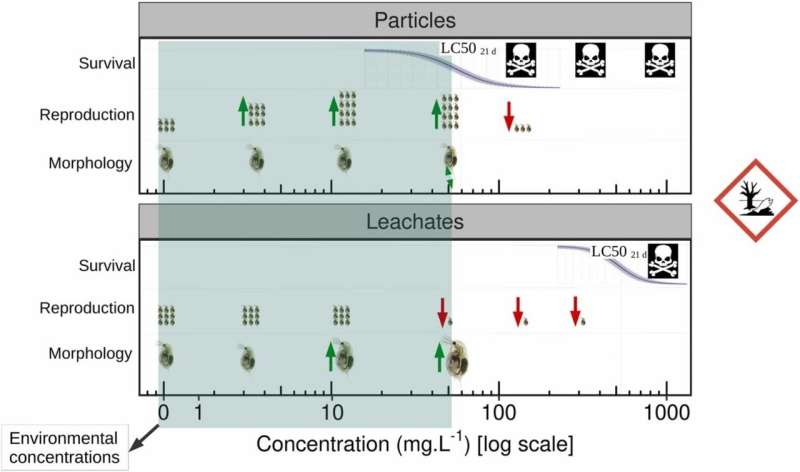
Plastic microparticles released into the environment from common road tires should be treated as a “high concern” pollutant that may exceed chronic safety limits in some heavily contaminated environments, new research has shown.
For this study, the team used several popular tire brands from around the world to generate a tire tread microparticle mixture. The toxicities of both particles and chemical leachates were then studied on the test species, the water flea. They found that over a three-week period, pristine tire tread microparticles were more toxic (concentration being lethal for 50% of the population, LC50, is 60 mg.L‑1) than chemical leachates alone (LC50 542 mg.L‑1).
They discovered that the plastic pollutants from the tires showed a distinct effect on both the reproduction and development of the water flea—which also displayed visible particle uptake within its digestive tract.
When looking at the leachates—liquid that has passed through the tire material, taking some of the harmful chemicals with it—the researchers found a strong presence of zinc, titanium and strontium as well as many organic chemicals. Overall, of the numerous organic chemicals present during the test, more than 50 were found across all five tire brands, with a significant number of those chemicals classified as very toxic.
Tire-tread particles generated during roadway use are a major environmental pollutant, with a significant proportion being washed away into waterways near traffic networks. It is estimated at about 18% of these particles eventually reach freshwater, while 2% reach estuaries.
The use of tires by cars, buses and other vehicles is a ubiquitous feature of modern life, all served by a mass global tire industry that is forecast to grow about 3% each year.